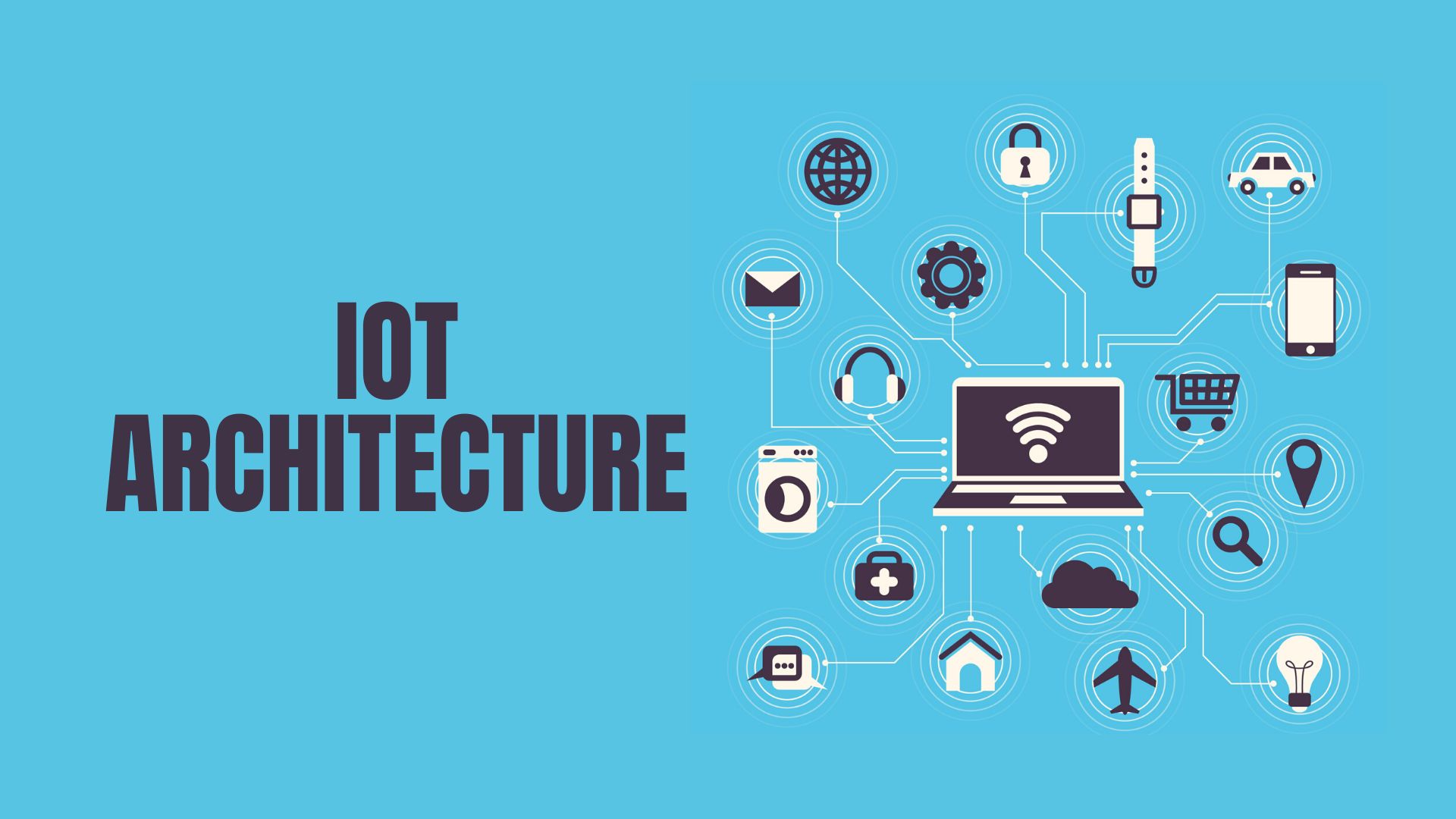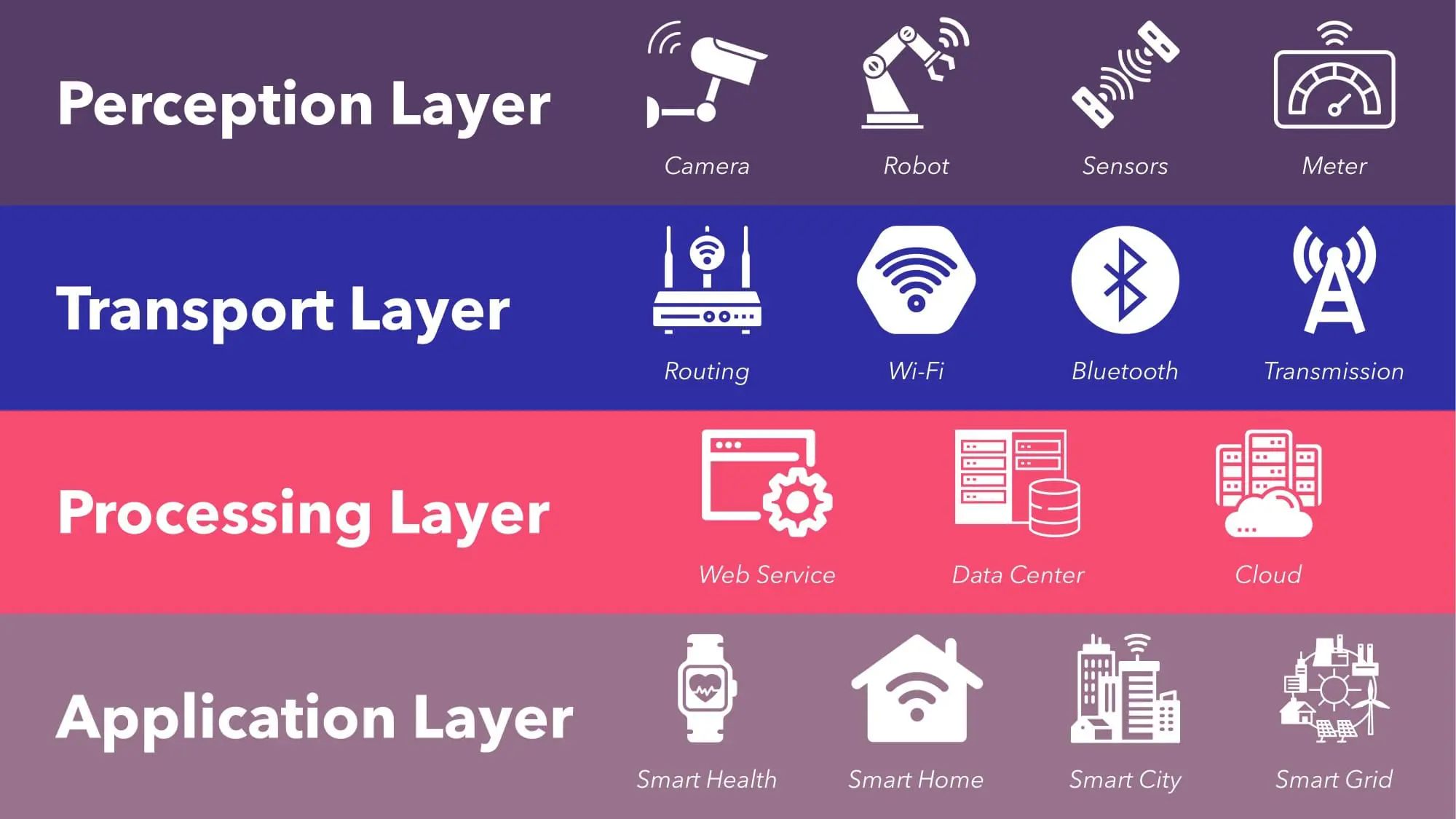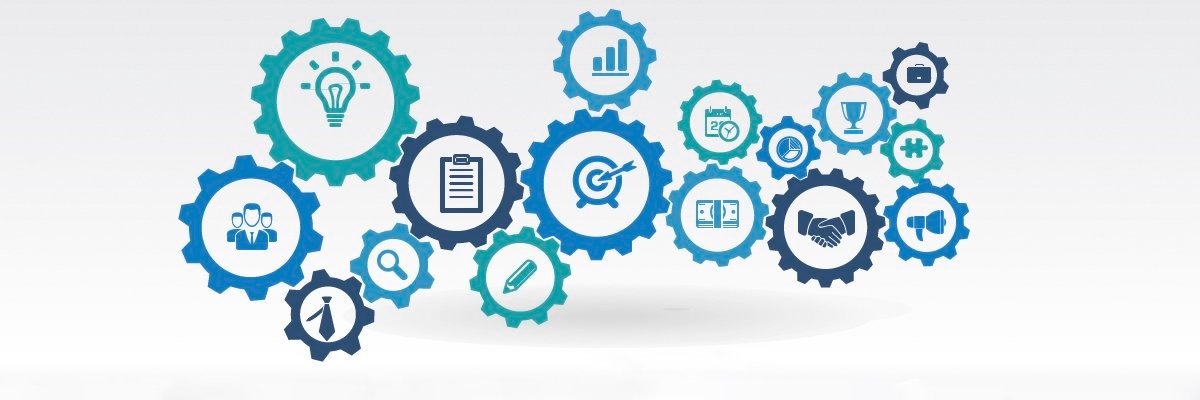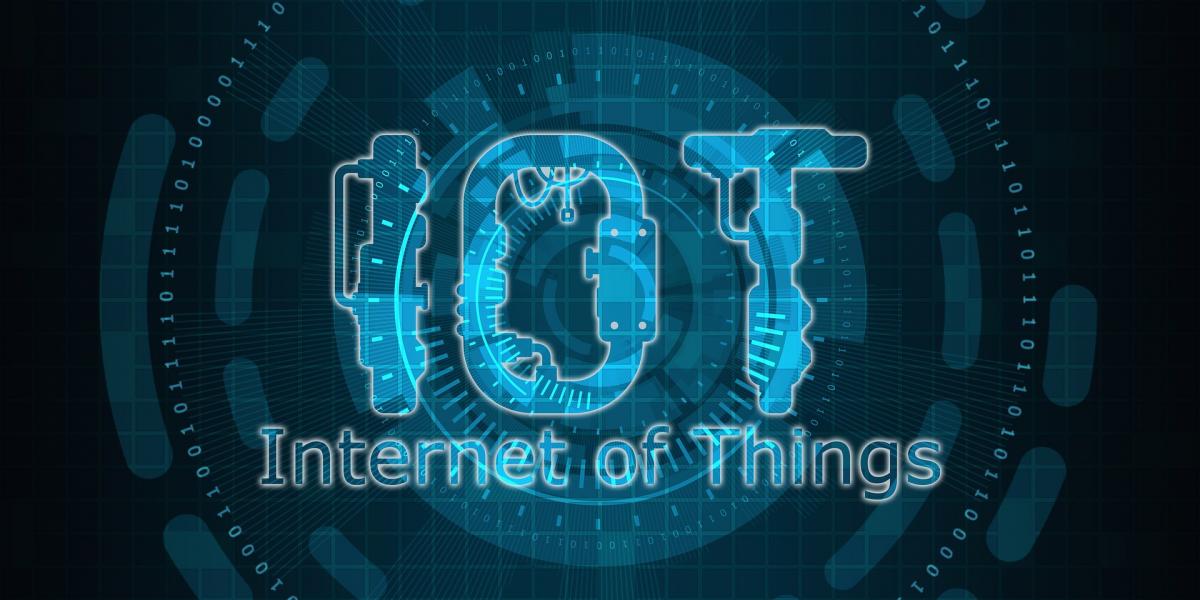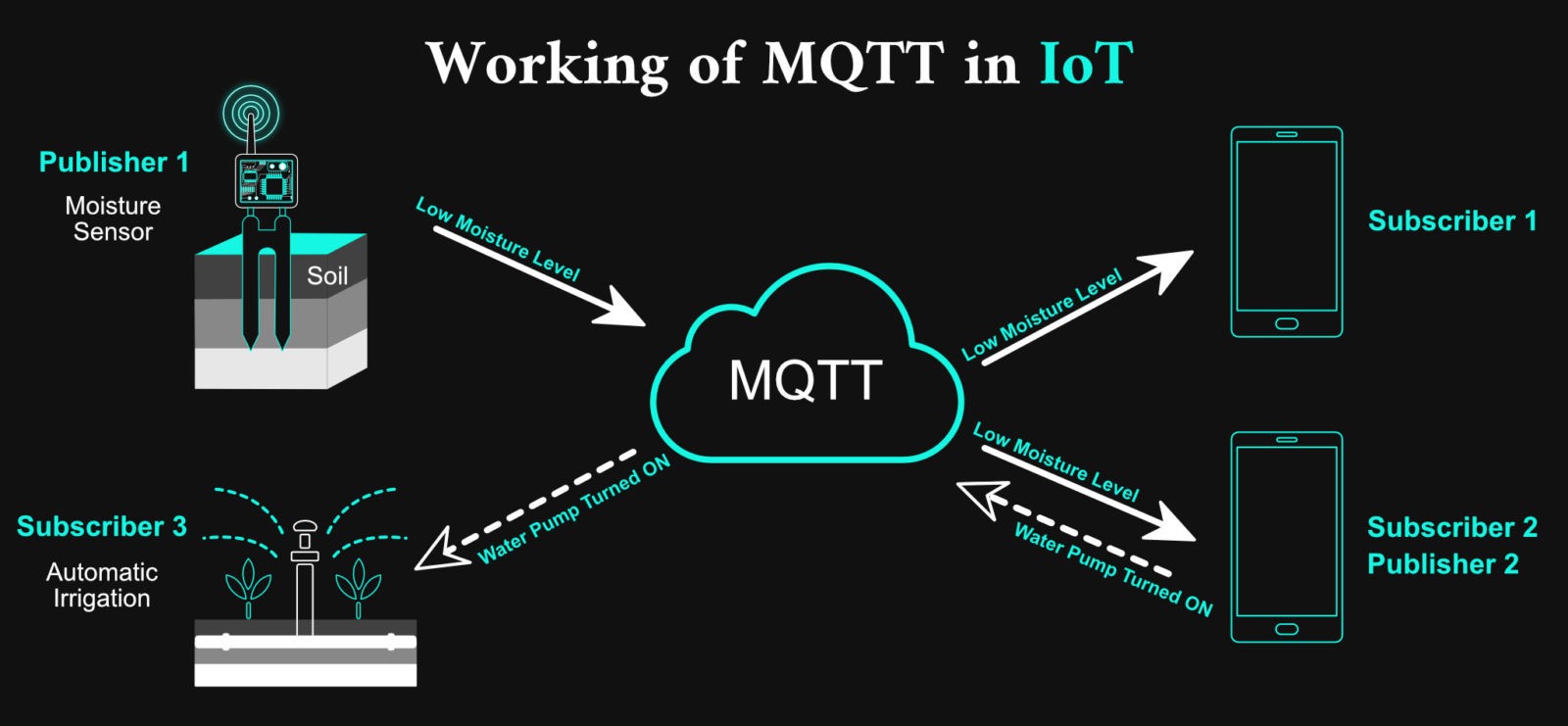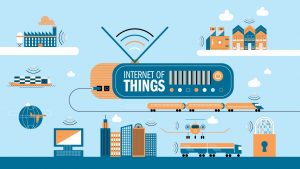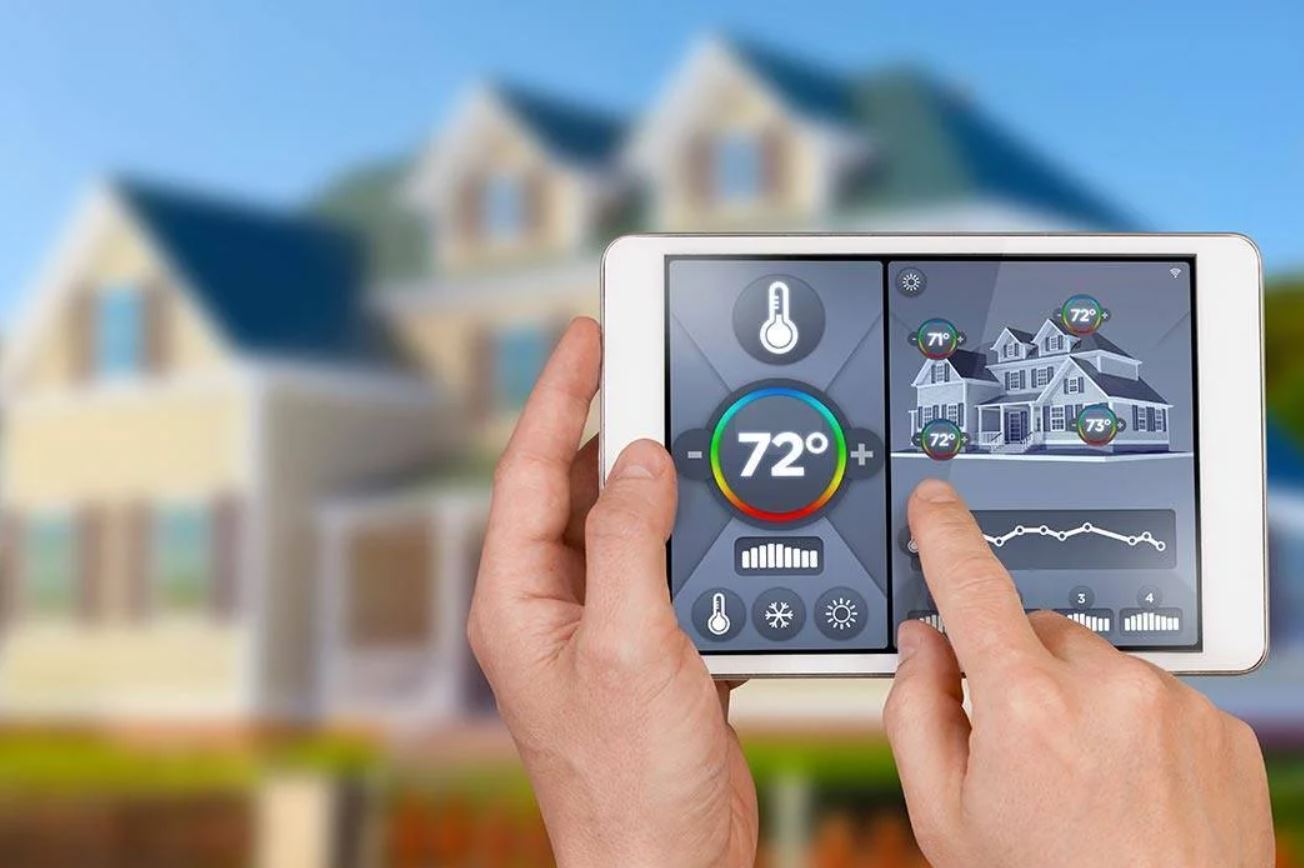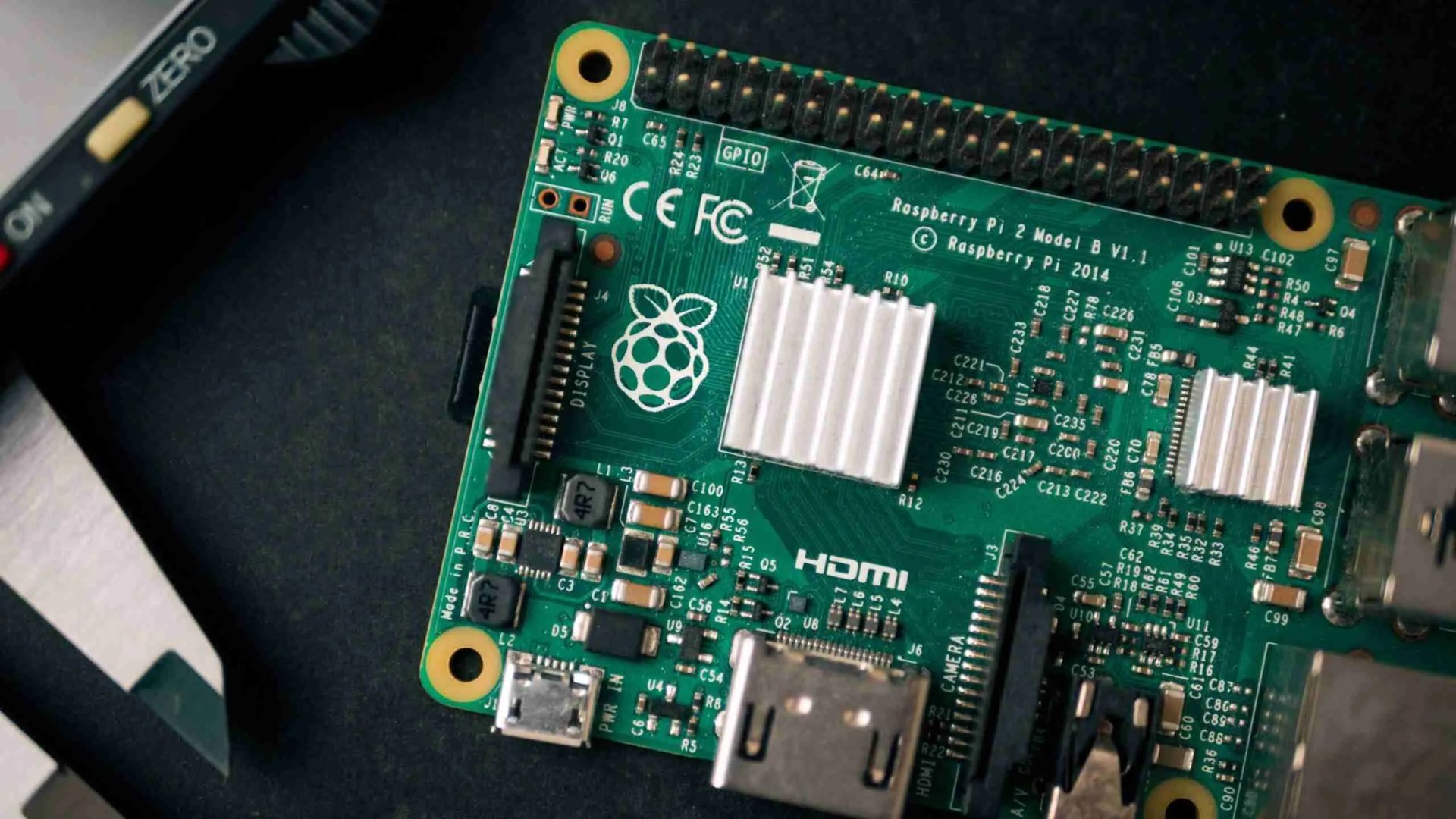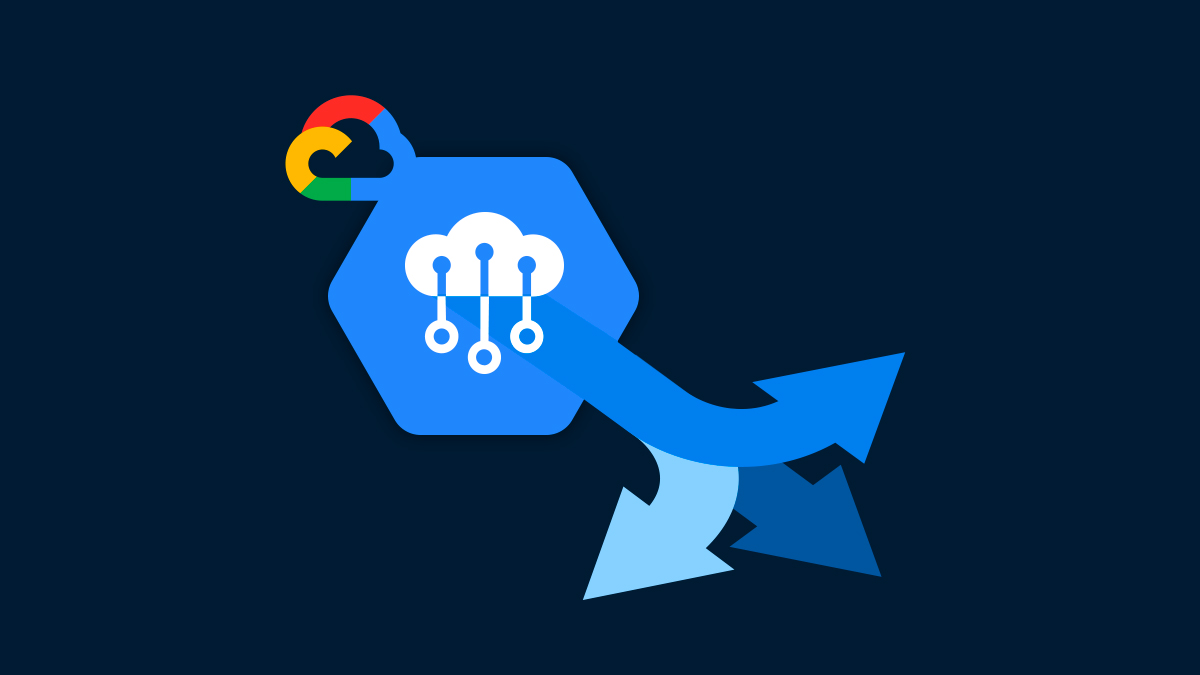Introduction
The rapid advancements in technology have led to the widespread adoption of the Internet of Things (IoT) concept in various industries. IoT refers to the interconnected network of physical devices, vehicles, buildings, and other items embedded with sensors, software, and network connectivity to exchange data and perform tasks without human intervention. This revolutionary technology has the potential to transform our lives by connecting the physical world with the digital realm.
The IoT architecture forms the foundation of this interconnected network, enabling seamless communication and data exchange between devices. It consists of various components that work together to ensure the smooth functioning of the IoT ecosystem.
In this article, we will explore the key components of IoT architecture, discuss its benefits and challenges, and highlight the importance of a well-designed IoT architecture in enabling the realization of the full potential of IoT technology. So, let’s dive deeper into the world of IoT architecture and uncover its secrets.
What is IoT Architecture?
IoT architecture refers to the structure and framework that defines how different components of the Internet of Things ecosystem interact and collaborate to enable seamless communication and data exchange. It encompasses the hardware, software, protocols, and connectivity layers that work together to facilitate the flow of information between devices, sensors, networks, and cloud platforms.
At its core, IoT architecture aims to establish a standardized framework that allows diverse devices and systems to connect, communicate, and share data effectively. It provides a scalable and flexible infrastructure that supports the integration of various IoT devices and applications, enabling them to work harmoniously towards a common goal.
The architecture of an IoT system typically includes layers or tiers, each responsible for different functionalities and interactions. These layers work together to ensure the efficient flow of data and enable the execution of tasks in an IoT environment.
One essential aspect of IoT architecture is the concept of edge computing. Edge computing refers to the practice of processing and analyzing data at or near the source, rather than sending it to a remote cloud server. By bringing computation and analytics closer to the devices and sensors, edge computing reduces latency, enhances real-time decision-making capabilities, and minimizes the reliance on constant internet connectivity.
Furthermore, IoT architecture emphasizes interoperability – the ability of different devices and systems to exchange and use information seamlessly. Interoperability is crucial for the success of IoT, as it enables the aggregation and analysis of data from multiple sources, leading to more comprehensive insights and actionable intelligence.
Overall, IoT architecture serves as the backbone of the entire IoT ecosystem, ensuring that devices, networks, and applications can communicate, collaborate, and function effectively. It provides a standardized framework that allows for scalability, flexibility, and interoperability, paving the way for the seamless integration of IoT into various industries and domains.
Components of IoT Architecture
IoT architecture comprises several key components that work in synergy to enable the seamless functioning of the IoT ecosystem. Let’s explore these components and understand their role in creating a robust and efficient IoT architecture.
1. Things: The ‘Things’ in IoT architecture refer to physical devices or objects that are connected to the internet and have the capability to collect and transmit data. These things can range from sensors and actuators to everyday objects like refrigerators, thermostats, and wearable devices.
2. Sensors and Actuators: Sensors are instrumental in capturing data from the physical environment. They can measure factors such as temperature, humidity, light, and motion. Actuators, on the other hand, are devices that can control or manipulate physical elements based on the received instructions.
3. Connectivity: Connectivity forms a crucial component of IoT architecture, as it enables devices and systems to communicate and exchange data. Various connectivity protocols, such as Wi-Fi, Bluetooth, Zigbee, and cellular networks, are used to establish the communication channels between devices.
4. Data Processing: The data collected by sensors is processed and transformed into meaningful information. This component involves data filtering, aggregation, and transformation to derive insights and actionable intelligence.
5. Analytics: Analytics plays a vital role in IoT architecture by extracting valuable insights from the collected data. This component uses algorithms and machine learning techniques to analyze the data and make predictions or identify patterns and anomalies.
6. User Interface: The user interface component enables users to interact with the IoT system. It includes mobile applications, web interfaces, and dashboards that provide users with real-time information, control, and management of IoT devices.
7. Security and Privacy: Security is a critical aspect of IoT architecture. This component ensures the protection of data, devices, and networks from unauthorized access, breaches, and cyber threats. It includes measures such as encryption, authentication, and access control.
8. Cloud Infrastructure: Cloud platforms provide the necessary infrastructure and resources to store, process, and analyze the vast amount of data generated by IoT devices. Cloud computing enables scalability, flexibility, and accessibility for IoT applications.
These components work together to create a cohesive IoT architecture that enables seamless communication, data processing, and analysis in the interconnected network of devices. They form the foundation for the successful implementation and utilization of IoT technology in various domains and industries.
Things
In IoT architecture, the term “Things” refers to physical objects that are embedded with sensors, actuators, and network connectivity, allowing them to collect and transmit data. These objects can be anything from industrial machinery, appliances, vehicles, buildings, and even wearable devices. The main purpose of connecting these objects to the internet is to enable them to interact with each other and with humans, creating a smart and interconnected environment.
The Things component of IoT architecture is foundational, as it encompasses all the devices that contribute to the collection and transmission of data. These devices are typically equipped with sensors that capture various types of data, such as temperature, humidity, pressure, motion, and more. By connecting these devices to the internet, they become part of the vast network of interconnected objects and contribute to the generation of data that drives the entire IoT ecosystem.
Depending on the application and use case, IoT devices can vary in size, functionality, and complexity. From small, low-power sensors used for environmental monitoring to large-scale industrial machines that monitor productivity and performance, IoT devices come in diverse forms. Additionally, wearable devices, such as smartwatches and fitness trackers, are also considered IoT devices as they collect and transmit data about an individual’s health and activity levels.
The Things component is not limited to static objects but can also include mobile devices or vehicles that are equipped with IoT capabilities. For example, connected cars can collect and transmit data about their performance, location, and driving patterns. These data can then be used for various purposes, such as predictive maintenance, improving traffic management, or enhancing overall driver experience.
In terms of connectivity, IoT devices can communicate with each other either directly or through a central hub or gateway. The connectivity options for IoT devices can be wired, wireless, or hybrid, depending on the specific requirements of the application. Additionally, advancements in low-power communication protocols, such as Bluetooth Low Energy (BLE) and Narrowband IoT (NB-IoT), have made it possible to connect even battery-powered devices to the IoT network efficiently.
The Things component of IoT architecture is crucial, as it forms the foundation of the entire ecosystem. Without the presence of connected devices, there would be no data to collect, transmit, and analyze, rendering IoT technology ineffective. Therefore, a well-designed and scalable architecture should consider the diversity of Things and their connectivity requirements to ensure seamless integration and operation within the IoT network.
Sensors and Actuators
Sensors and actuators are integral components of IoT architecture, playing a vital role in collecting data from the physical world and taking action based on the received instructions. These devices enable the interaction between the digital and physical realms, making it possible to monitor and control various aspects of the environment in which IoT systems operate.
Sensors are responsible for detecting and measuring physical phenomena such as temperature, pressure, humidity, light, sound, and motion. They convert these measurements into electrical signals that can be processed and analyzed. Sensors are available in a wide range of types and forms, with each suited for specific use cases. For instance, temperature sensors are used to monitor and maintain optimum temperature levels in industrial processes, while motion sensors are employed for security and occupancy detection in smart buildings.
Actuators, on the other hand, are devices that can physically control or manipulate objects based on the received instructions. They can be motors, valves, switches, or any other mechanical or electrical devices that respond to external signals. Actuators are essential in converting digital commands or decisions into physical actions. For example, actuating devices like motors can be used to open or close doors, turn on or off appliances, or adjust the position of industrial machinery.
The combination of sensors and actuators allows IoT systems to gather real-time data from the environment and respond to changing conditions autonomously. This capability enables applications such as environmental monitoring, energy management, smart agriculture, and industrial automation. For instance, in a smart home, temperature sensors can detect the ambient temperature, while actuators can adjust the thermostat or control the HVAC system to maintain a comfortable temperature.
Moreover, sensors and actuators are responsible for collecting data that could be used for analysis and decision-making. They generate a continuous stream of data that provides insights into the status, behavior, and performance of various IoT devices and systems. This data, when combined with advanced analytics techniques, allows for predictive maintenance, optimization of processes, and efficient resource management.
It is important to note that sensors and actuators need to operate reliably and accurately for a successful IoT implementation. Considerations such as sensor placement, calibration, and maintenance are crucial to ensure the integrity and quality of the collected data. Similarly, the responsiveness, precision, and durability of actuators are important for swift and accurate physical interactions.
In summary, sensors and actuators play a critical role in IoT architecture by enabling data collection from the physical world and facilitating physical actions based on the received instructions. They form the bridge between the digital and physical realms, bringing IoT systems to life and driving their functionality and effectiveness in various domains and applications.
Connectivity
Connectivity is a fundamental component of IoT architecture, enabling devices to communicate with each other and share data over the internet. It encompasses the various protocols, networks, and technologies that facilitate seamless and reliable communication within the IoT ecosystem.
IoT devices rely on different types of connectivity options, depending on the specific requirements of the application. Here are some common connectivity options used in IoT architecture:
1. Local Area Networks (LAN): LAN connectivity, such as Ethernet or Wi-Fi, is commonly used for connecting IoT devices within a limited geographical area. This type of connectivity is suitable for applications that require high bandwidth and low latency, such as home automation systems or smart offices.
2. Wide Area Networks (WAN): WAN connectivity, including cellular networks like 3G, 4G, and 5G, provides widespread coverage and allows IoT devices to connect over long distances. WAN is ideal for applications that require mobility, such as connected vehicles or remote monitoring of assets in diverse locations.
3. Low Power Wide Area Networks (LPWAN): LPWAN technologies, such as LoRaWAN and Sigfox, offer long-range connectivity with low power consumption. LPWAN is ideal for applications that require low data rates and extended battery life, such as smart agriculture, asset tracking, or environmental monitoring.
4. Bluetooth and BLE (Bluetooth Low Energy): Bluetooth and BLE are short-range wireless technologies designed for low-power consumption. They are commonly used for connecting IoT devices to smartphones, wearables, or other nearby devices in applications like health monitoring and home automation.
5. Zigbee and Z-Wave: Zigbee and Z-Wave are mesh networking technologies that enable devices to form a network and communicate with each other. These connectivity options are suitable for applications that require a large number of distributed devices, such as smart lighting systems or home security.
In addition to these connectivity options, IoT architecture also utilizes gateways and routers to enable communication between devices and networks using different protocols. Gateways act as intermediaries, translating and bridging different communication protocols to ensure compatibility and interoperability.
Connectivity in IoT architecture goes beyond device-to-device communication; it also involves connecting devices to cloud platforms or edge computing infrastructure. Cloud connectivity enables the storage, processing, and analysis of data generated by IoT devices, while edge connectivity allows for real-time decision-making and local processing at the network edge.
To ensure secure and reliable communication, IoT architecture also incorporates various security measures, including encryption, authentication, and access control. These security mechanisms protect against unauthorized access, data breaches, and cyber threats, ensuring the confidentiality and integrity of sensitive information in the IoT network.
In summary, connectivity is a crucial component of IoT architecture, enabling devices to communicate and exchange data seamlessly. Whether through wired or wireless networks, IoT devices rely on various connectivity options to facilitate effective communication, ensuring that data flows smoothly within the IoT ecosystem. The choice of connectivity depends on the specific requirements of the application, considering factors such as range, bandwidth, power consumption, and scalability.
Data Processing
Data processing is a critical component of IoT architecture, where collected data from sensors and devices undergo various operations to extract meaningful insights and facilitate decision-making. IoT generates a massive volume of data, and effective data processing is essential to handle the data in a timely, efficient, and accurate manner.
The data processing component of IoT architecture involves several stages, including data filtering, aggregation, transformation, and analysis. Let’s explore these stages in more detail:
1. Data Filtering: Data filtering involves capturing and extracting relevant data from the raw data generated by sensors and devices. This process eliminates irrelevant or redundant data, ensuring that only essential data is processed further. Filtering data at the edge or device level can reduce bandwidth usage and improve real-time decision-making capabilities.
2. Data Aggregation: Data aggregation involves combining and summarizing data from multiple sources to form a comprehensive view. Aggregating data allows for a broader analysis and helps identify patterns, trends, and anomalies. This process is particularly beneficial when dealing with large-scale IoT deployments that generate vast amounts of data from multiple devices.
3. Data Transformation: Data transformation is the process of converting raw data into a structured format that is suitable for analysis. This may involve converting data into a standardized format, normalizing data units, or applying algorithms to derive more meaningful information. Data transformation enables efficient analysis and facilitates the integration of data from various sources or systems.
4. Data Analysis: Once the data is filtered, aggregated, and transformed, it is ready for analysis. Data analysis involves applying statistical techniques, machine learning algorithms, and predictive models to extract insights, detect patterns, and make informed decisions. Data analysis can provide valuable information for optimizing processes, predicting maintenance needs, and enhancing overall operational efficiency.
Data processing in IoT architecture can be performed in different locations, depending on the specific requirements of the application. It can be done at the edge, where data is processed close to the source, or in the cloud, where data is sent to remote servers for analysis. Edge computing enables real-time processing and reduces latency, while cloud computing provides scalability, storage capabilities, and advanced analytics tools.
Furthermore, data processing in IoT architecture often involves real-time or near-real-time analysis. This allows for proactive decision-making and timely responses to changing conditions or events. Real-time data processing is particularly critical for applications such as industrial automation, smart grids, or real-time monitoring of critical infrastructure.
Data processing in IoT architecture also includes data storage and management. Depending on the data requirements, organizations can choose between traditional databases or special-purpose IoT platforms that offer optimized storage and querying capabilities for large-scale IoT data.
In summary, data processing is a vital component of IoT architecture, enabling the extraction of insights and meaningful information from the vast amounts of data generated by IoT devices. By filtering, aggregating, transforming, and analyzing data, organizations can gain valuable insights, optimize processes, and make data-driven decisions for improved efficiency and performance in various IoT applications.
Analytics
Analytics plays a crucial role in IoT architecture by harnessing the power of data to extract valuable insights, patterns, and trends. It involves using advanced algorithms, statistical techniques, and machine learning to make sense of the vast amounts of data generated by IoT devices. Through analytics, organizations can derive actionable intelligence, enhance decision-making, and drive business value in various IoT applications.
The analytics component of IoT architecture involves several key processes and techniques:
1. Descriptive Analytics: Descriptive analytics aims to understand what has happened by analyzing historical data. It involves summarizing and visualizing data to gain insights into past events and trends. Descriptive analytics helps identify patterns, anomalies, and correlations, forming the foundation for further analysis and decision-making.
2. Diagnostic Analytics: Diagnostic analytics seeks to understand why something happened by investigating the causes of past events. It involves analyzing data to identify the factors or variables that contribute to a particular outcome. By understanding the reasons behind certain events or patterns, organizations can make more informed decisions and take corrective actions.
3. Predictive Analytics: Predictive analytics uses historical data and statistical models to make predictions or forecasts about future events or outcomes. It involves utilizing machine learning algorithms to identify trends, patterns, and relationships in the data and identify potential future scenarios. Predictive analytics enables organizations to proactively address potential issues, optimize operations, and make data-driven decisions.
4. Prescriptive Analytics: Prescriptive analytics goes beyond predictions and provides recommendations on the best course of action to achieve desired outcomes. It uses optimization algorithms and decision models to determine the optimal actions based on the analyzed data and predefined constraints. Prescriptive analytics helps organizations make informed decisions, optimize processes, and improve overall efficiency.
The integration of analytics in IoT architecture enables a wide range of applications and benefits:
– Predictive Maintenance: By analyzing sensor data, organizations can identify patterns and anomalies that indicate potential equipment failures. Predictive maintenance allows proactive maintenance and reduces unplanned downtime, saving costs and improving productivity.
– Asset and Resource Optimization: Analytics can help optimize resource allocation, such as energy, water, or inventory, based on historical data and predictive models. This improves operational efficiency and reduces waste.
– Demand Forecasting: By analyzing historical sales data and external factors, organizations can forecast demand with greater accuracy. This enables better inventory management, production planning, and supply chain optimization.
– Customer Behavior Analysis: By analyzing data from customer interactions, organizations can gain insights into customer preferences, needs, and behavior patterns. This enables personalized marketing, targeted promotions, and enhanced customer experiences.
– Risk Management: Analytics can help identify and mitigate potential risks in various domains, such as fraud detection in financial transactions or anomaly detection in cybersecurity. This enhances security and minimizes potential losses.
In summary, analytics is a critical component of IoT architecture, enabling organizations to leverage the power of data for actionable insights and informed decision-making. Through descriptive, diagnostic, predictive, and prescriptive analytics, IoT applications can optimize processes, improve efficiency, enhance customer experiences, and drive innovation across various industries.
User Interface
The user interface (UI) component of IoT architecture focuses on the design and presentation of information to enable users to interact with IoT systems and devices. It provides a means for users to monitor, control, and manage IoT devices, as well as access and interpret the data generated by these devices. An intuitive and user-friendly UI is crucial for enhancing the usability and user experience of IoT applications.
The UI in IoT architecture can take various forms, including mobile applications, web interfaces, dashboards, and voice-activated assistants. Here are some important considerations when designing the UI for IoT systems:
1. Device Compatibility: IoT systems usually involve a diverse range of devices, including smartphones, tablets, laptops, and smart TVs. Therefore, the UI should be designed to work across multiple devices and screen sizes, ensuring compatibility and consistency in user experience.
2. Responsive Design: With the proliferation of mobile devices, a responsive design is essential to adapt the UI to different screen sizes and orientations. This ensures that users can access and interact with the IoT system seamlessly on various devices.
3. Intuitive Navigation: The UI should provide clear and intuitive navigation, allowing users to easily find and access the desired features and functions. Well-organized menus, logical navigation paths, and consistent labeling enhance usability and reduce user frustration.
4. Real-Time Data Visualization: IoT generates vast amounts of real-time data, and the UI should provide visualization tools to present this data in an easily understandable format. Graphs, charts, and dashboards can help users visualize trends, patterns, and anomalies, enabling quick insights and informed decision-making.
5. Customization and Personalization: Users should have the ability to customize the UI based on their preferences and needs. This can include options to personalize the layout, choose display metrics, or set up personalized alerts or notifications. Customization enhances user satisfaction and engagement.
6. Contextual Feedback: The UI should provide clear and timely feedback to user actions. Visual cues, progress indicators, and error messages help users understand the system’s response and feel confident in their interactions.
7. Voice and Gesture Controls: With the increasing popularity of voice assistants and smart speakers, incorporating voice and gesture controls in the UI can enhance user convenience and accessibility. Voice commands, gestures, or natural language processing can provide alternative interaction methods.
8. Accessibility: The UI should be designed with accessibility in mind, considering users with disabilities. This includes features such as adjustable font size, high contrast options, and compatibility with screen readers to ensure inclusivity for all users.
A well-designed UI in IoT architecture fosters a positive user experience, enables seamless interaction, and empowers users to take full advantage of IoT systems and devices. It promotes user engagement, ease of use, and satisfaction, ultimately driving the adoption and success of IoT applications in various domains.
Security and Privacy
Security and privacy are paramount considerations in IoT architecture due to the sensitive nature of the data collected and transmitted by IoT devices. With the interconnected nature of IoT systems and the vast amount of data exchanged, ensuring robust security measures is crucial to protect against unauthorized access, data breaches, and potential malicious activities.
The security and privacy component of IoT architecture involves multiple layers of protection and safeguards:
1. Device Authentication: IoT devices should be equipped with robust authentication mechanisms to verify their identity and ensure that only authorized devices can connect to the IoT network. This can be achieved through secure protocols, unique device keys, or biometric authentication methods.
2. Data Encryption: Data encryption is essential to protect the confidentiality and integrity of data transmitted across the IoT network. Secure encryption algorithms ensure that data is unreadable to unauthorized individuals or malicious actors, preventing unauthorized access or tampering.
3. Access Control: Access control mechanisms enforce restrictions on who can access, modify, or interact with IoT devices and data. This includes role-based access control, user authentication, and granular permission settings to ensure that only authorized individuals or entities can perform specific actions.
4. Network Security: IoT networks should be protected with robust security measures to prevent unauthorized access or tampering. This includes secure Wi-Fi protocols, firewalls, intrusion detection systems, and network segmentation to isolate devices and data.
5. Data Privacy: IoT architecture should adhere to privacy regulations and best practices to protect user data from unauthorized use or disclosure. Privacy policies, data anonymization techniques, and consent management systems are crucial in maintaining user trust and compliance with privacy requirements.
6. Secure Firmware and Software Updates: Regular firmware and software updates are essential to address potential security vulnerabilities or bugs in IoT devices and systems. Ensuring a secure update process prevents unauthorized modifications and enhances the overall security and integrity of the IoT network.
7. Monitoring and Incident Response: Continuous monitoring and timely response to security events or incidents are crucial in IoT architecture. Security monitoring tools, real-time alerts, and incident response plans help identify and mitigate security threats before they cause significant harm or disruption.
8. Security-by-Design: Building security into the IoT architecture from the beginning ensures a proactive approach to security. Security considerations should be integrated into the design and development stages of IoT devices and systems, rather than being treated as an afterthought.
Implementing robust security and privacy measures in IoT architecture is essential to protect sensitive data, maintain user trust, and ensure the safe and reliable operation of IoT systems. With the increasing number of IoT devices and the potential impact of security breaches, organizations must prioritize security to mitigate risks and safeguard the IoT ecosystem.
Cloud Infrastructure
Cloud infrastructure is a crucial component of IoT architecture, providing the necessary computing resources and storage capabilities to handle the massive volume of data generated by IoT devices. The cloud acts as a centralized platform where data from IoT devices is processed, analyzed, and stored, enabling scalable and flexible operations for IoT applications.
The cloud infrastructure component of IoT architecture offers several advantages:
1. Scalability and Elasticity: Cloud platforms provide the ability to scale resources up or down based on computing and storage needs. This flexibility allows IoT systems to handle fluctuations in data volume and processing requirements, ensuring optimal performance and efficiency.
2. Storage and Data Management: Cloud infrastructure offers ample storage capacity to handle the vast amount of data generated by IoT devices. It enables efficient data management, including data retention, retrieval, and archival, allowing organizations to store and access historical data for analysis and compliance purposes.
3. Processing and Analysis: Cloud platforms provide powerful computing capabilities, allowing data from IoT devices to be processed, analyzed, and visualized. Through cloud-based analytics tools, organizations can gain valuable insights and make data-driven decisions in real-time or near-real-time.
4. Accessibility and Collaboration: Cloud infrastructure enables remote access to IoT systems and data, allowing authorized users to monitor and interact with IoT devices from anywhere, at any time. This promotes collaboration, seamless integration with other systems, and the ability to manage and control IoT deployments remotely.
5. Integration with Services and APIs: Cloud platforms often provide a wide range of services and APIs that can be leveraged by IoT applications. These services include machine learning, data streaming, authentication, and security services, enabling organizations to enhance the functionality and capabilities of their IoT systems.
6. Reliability and Availability: Cloud infrastructure is designed with high availability and reliability in mind, leveraging redundant data centers and disaster recovery mechanisms. This ensures that IoT applications have minimal downtime and can handle unpredictable spikes in traffic or demand.
7. Cost Optimization: Cloud services follow a pay-as-you-go model, allowing organizations to optimize costs by utilizing resources as needed. This eliminates the need for upfront infrastructure investments and allows organizations to scale resources according to their requirements, driving cost-efficiency in IoT deployments.
8. Security and Compliance: Cloud providers have robust security measures in place to protect data stored in their infrastructure. They adhere to industry best practices and compliance standards, providing organizations with a secure environment to store and process sensitive IoT data.
Cloud infrastructure plays a significant role in enabling the scalability, flexibility, and processing capabilities required by IoT applications. With its storage, computing, and analytical capabilities, cloud platforms provide the foundation for organizations to leverage the full potential of IoT technology and drive innovation in various domains and industries.
Benefits of IoT Architecture
IoT architecture offers a multitude of benefits, revolutionizing industries and transforming the way we live and work. Here are some key advantages of implementing IoT architecture:
1. Enhanced Efficiency and Productivity: IoT architecture enables organizations to streamline processes and automate routine tasks, leading to increased efficiency and productivity. By leveraging real-time data and analytics, organizations can optimize operations, reduce manual intervention, and make data-driven decisions for improved productivity.
2. Cost Savings: IoT architecture can help optimize resource utilization and reduce operational costs. Through predictive maintenance, organizations can proactively identify and address equipment failures, minimizing downtime and reducing maintenance costs. Additionally, IoT-enabled energy management systems can track and optimize energy usage, leading to cost savings and environmental sustainability.
3. Improved Customer Experience: IoT architecture facilitates personalized and seamless customer experiences. IoT devices and systems can collect data on customer preferences, behavior, and usage patterns, allowing organizations to deliver tailored products, services, and recommendations. Enhanced customer experiences drive customer satisfaction, loyalty, and long-term business growth.
4. Real-time Monitoring and Decision-making: IoT architecture enables real-time monitoring of assets, processes, and events. With real-time data and analytics, organizations can quickly detect issues, respond promptly, and make timely decisions. This capability is particularly crucial in industries such as healthcare, transportation, and manufacturing, where immediate actions can prevent accidents, increase safety, and save lives.
5. Data-driven Insights and Business Intelligence: IoT architecture generates a tremendous amount of data that can be processed and analyzed to gain valuable insights. These insights enable organizations to identify trends, patterns, and correlations, providing a deep understanding of their operations, customers, and market dynamics. This data-driven intelligence helps organizations make informed strategic decisions and seize new business opportunities.
6. Remote Monitoring and Control: IoT architecture allows organizations to remotely monitor and control devices, machines, or processes. This enables businesses to manage operations across multiple locations, reducing the need for physical presence and enabling remote troubleshooting and maintenance. Remote monitoring and control enhance operational efficiency, reduce costs, and improve overall operational agility.
7. Predictive and Preventive Maintenance: By collecting and analyzing real-time data from IoT-enabled devices, organizations can predict and prevent maintenance issues before they occur. Predictive maintenance enables proactive maintenance scheduling, reduces unplanned downtime, and maximizes the lifespan of assets. This contributes to cost savings, improved reliability, and increased operational efficiency.
8. Integration and Interoperability: IoT architecture promotes integration and interoperability between different systems, devices, and applications. It allows seamless data sharing and collaboration across diverse platforms and technology stacks, enabling organizations to harness the full potential of IoT ecosystems and create innovative solutions.
Overall, IoT architecture brings numerous benefits across industries, including increased efficiency, cost savings, enhanced customer experiences, real-time monitoring, improved decision-making, business intelligence, remote control, and predictive maintenance. Organizations that embrace IoT architecture can unlock new opportunities, gain a competitive edge, and drive significant business value in our increasingly connected world.
Challenges of IoT Architecture
While IoT architecture offers immense potential, it also presents several challenges that organizations need to overcome for successful implementation and operation of IoT systems. Here are some significant challenges associated with IoT architecture:
1. Security Concerns: Security is a primary concern in IoT architecture due to the interconnected nature of devices and the vast amount of data being transmitted. IoT devices are often vulnerable to cyber attacks, and any security breach can have severe consequences. Ensuring robust security measures, including encryption, access control, and secure firmware updates, is essential to protect against unauthorized access and data breaches.
2. Privacy Considerations: The collection and utilization of personal data in IoT architecture raise privacy concerns. With IoT devices monitoring and sharing sensitive information, organizations must adhere to privacy regulations, obtain user consent, and implement privacy-by-design principles to safeguard individuals’ privacy rights and maintain public trust.
3. Interoperability and Standardization: Interoperability and standardization are critical challenges in IoT architecture. With a wide range of devices, protocols, and platforms available, ensuring seamless communication and compatibility can be complex. Establishing industry-wide standards and protocols is essential to enable interoperability and facilitate the integration of different IoT systems.
4. Scalability and Data Management: As the number of connected devices increases, managing the scale and volume of data generated by IoT devices becomes a challenge. Organizations must establish robust data storage and management processes to handle the massive influx of data, ensuring data integrity, reliability, and efficient data retrieval for analysis and decision-making.
5. Ethical and Legal Issues: The use of IoT devices and data raises ethical and legal considerations. Questions regarding data ownership, consent, liability, and the ethical implications of IoT applications need to be addressed. Comprehensive legal frameworks and ethical guidelines are necessary to ensure responsible and ethical use of IoT technology.
6. Connectivity and Network Reliability: Reliable and uninterrupted connectivity is crucial for IoT systems to operate seamlessly. Organizations must ensure reliable network infrastructure and address challenges related to network coverage, connectivity issues, and bandwidth limitations to support the continuous and efficient operation of IoT devices.
7. Power Consumption and Battery Life: Many IoT devices are battery-powered, and optimizing power consumption is critical for extending battery life and reducing maintenance requirements. Efficient power management techniques, such as low-power communication protocols and energy harvesting, need to be implemented to ensure the longevity and sustainability of IoT deployments.
8. Integration Complexity: Integrating IoT architecture into existing systems and infrastructure can be complex and challenging. Organizations must carefully plan and execute integration strategies to avoid disruptions, ensure smooth data flows, and maintain the overall stability and performance of the entire IoT ecosystem.
Addressing the challenges of IoT architecture requires collaboration between various stakeholders, including technology providers, regulators, industry organizations, and end-users. By focusing on security, privacy, interoperability, scalability, ethics, and integration, organizations can overcome these challenges and unlock the true potential of IoT architecture for innovation, efficiency, and improved experiences in various domains and industries.
Conclusion
IoT architecture plays a pivotal role in enabling the seamless integration and efficient operation of the Internet of Things ecosystem. By connecting physical devices, sensors, networks, and cloud platforms, IoT architecture creates a framework for collecting, transmitting, and analyzing vast amounts of data, leading to smarter decision-making and enhanced operational efficiency.
Throughout this article, we have explored the key components of IoT architecture, including Things, Sensors and Actuators, Connectivity, Data Processing, Analytics, User Interface, Security and Privacy, and Cloud Infrastructure. Each component contributes to the overall functionality, scalability, and effectiveness of the IoT ecosystem.
IoT architecture brings numerous benefits to various industries, including enhanced efficiency and productivity, cost savings, improved customer experiences, real-time monitoring, data-driven insights, and remote control. Organizations can leverage these benefits to drive innovation, gain a competitive edge, and deliver new value-added services to customers.
However, IoT architecture also presents challenges, such as security concerns, privacy considerations, interoperability, scalability, and integration complexity. Overcoming these challenges requires a multi-faceted approach, including robust security measures, adherence to privacy regulations, industry-wide standards, and careful planning and execution of integration strategies.
As IoT continues to evolve and expand, organizations must recognize the importance of designing and implementing well-structured IoT architectures. This involves considering the diverse components and their interactions, ensuring data integrity, privacy, and security, and embracing scalability, interoperability, and a user-centric approach.
In conclusion, IoT architecture provides a framework for connecting devices, collecting data, and enabling intelligent decision-making. By harnessing the power of IoT architecture, organizations can unlock new opportunities, optimize processes, enhance efficiencies, and deliver innovative solutions that transform industries and improve lives in our increasingly interconnected world.







